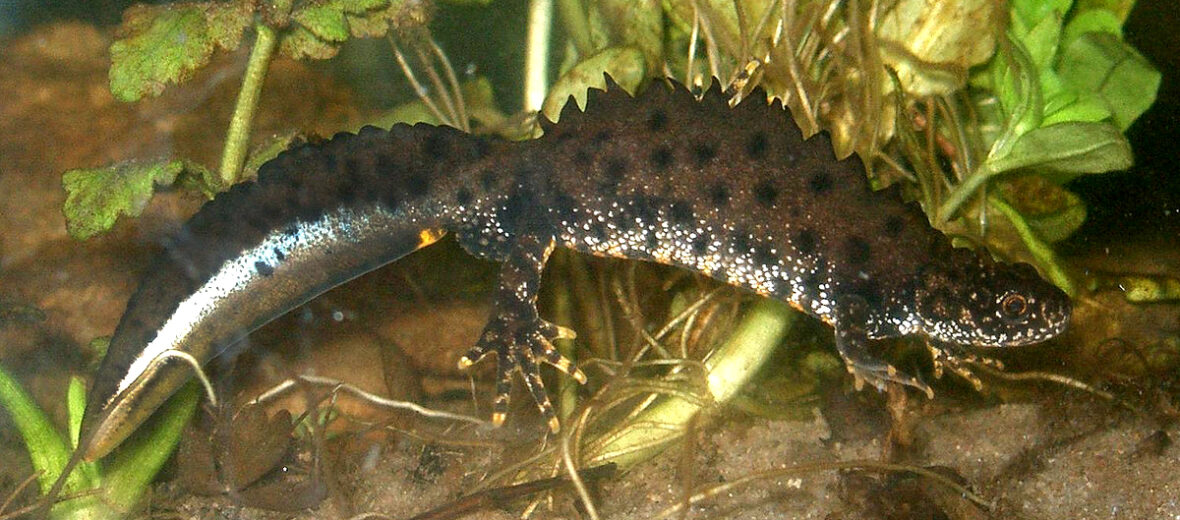
The northern crested newt, aka warty newt or great crested newt, hails from Europe to western Asia. These critters have the largest range of any European newt species. They prefer groves, deciduous woodlands, conifer woods, swampy meadows, hedgerows, scrublands, and quarries. Even though they face the threats of habitat loss and destruction at the hands of residential & commercial developments, logging, farming, ranching, and dams; invasive species, and with them disease, predation, and competition for food; and pollution, these newts are still listed as Least Concern by the IUCN. Their numbers are decreasing though.
First the Stats…
Scientific name: Triturus cristatus
Weight: Up to .33 ounce
Length: Up to 6.3 inches
Lifespan: Up to 17 years
Now on to the Facts!
1.) Northern crested newts prey on earthworms, insects, wood lice, slugs, and snails during much of the year. During the breeding season they prey on tadpoles of the common frog and toad, aquatic invertebrates, and they even cannibalize each other.
2.) In turn, the larvae are preyed on by fish, aquatic invertebrates (like dragonfly larvae), and birds. Adults are preyed on by snakes, birds, badgers, hedgehogs, and shrews.
3.) Just like all known newts, they spend the first part of their lives in the larval stage in water, then leave the water as adults. Each season they return to the water to breed and then return to land.
4.) They will breed once the temperature gets to above 41°F.
5.) These newts are nocturnal (active at night).
But wait, there’s more on the northern crested newt!
6.) The adults can travel up to 110 yards in a night in search of food and/or a partner.
7.) They brumate (hibernation for amphibians and reptiles) during the colder winter months.
Did you know…?
Like other newts, northern crested newts have the ability to excrete tetrodotoxin from their skin. This poison has a lower toxicity than other newts, but still makes for an unpleasant experience.
8.) The male attracts a female via specific body movements and attempts to wave pheromones towards her.
9.) Males are territorial and use small patches of clear ground as leks, or courtship arenas.
10.) When there is a successful pairing, the male leads the female over a spermatophore they’ve deposited on the ground, which she then takes up with her cloaca.
But wait, there’s still more on the northern crested newt!
11.) Females lay upwards of 200 eggs each season. It takes up to 5 minutes to lay each egg.
12.) Larvae hatch in up to 5 weeks, based on the ambient temperature.
13.) Just as they are ready to emerge from the water to take on a terrestrial (land) based life, they will absorb their external gills and their tail transforms, losing its flattened fin shape.
14.) The larvae have just a 4% chance for survival to adulthood.
15.) These, like other newts and salamanders are also subject to contracting Batrachochytrium salamandrivorans (Bsal). If untreated it is 100% lethal.
Now a Short Northern Crested Newt Video!
Be sure to share & comment below! Also, check out the Critter Science YouTube channel. Videos added regularly!
Want to suggest a critter for me to write about? Let me know here.
Some source material acquired from: Wikipedia and IUCN
Photo credit: Rainer Theuer



